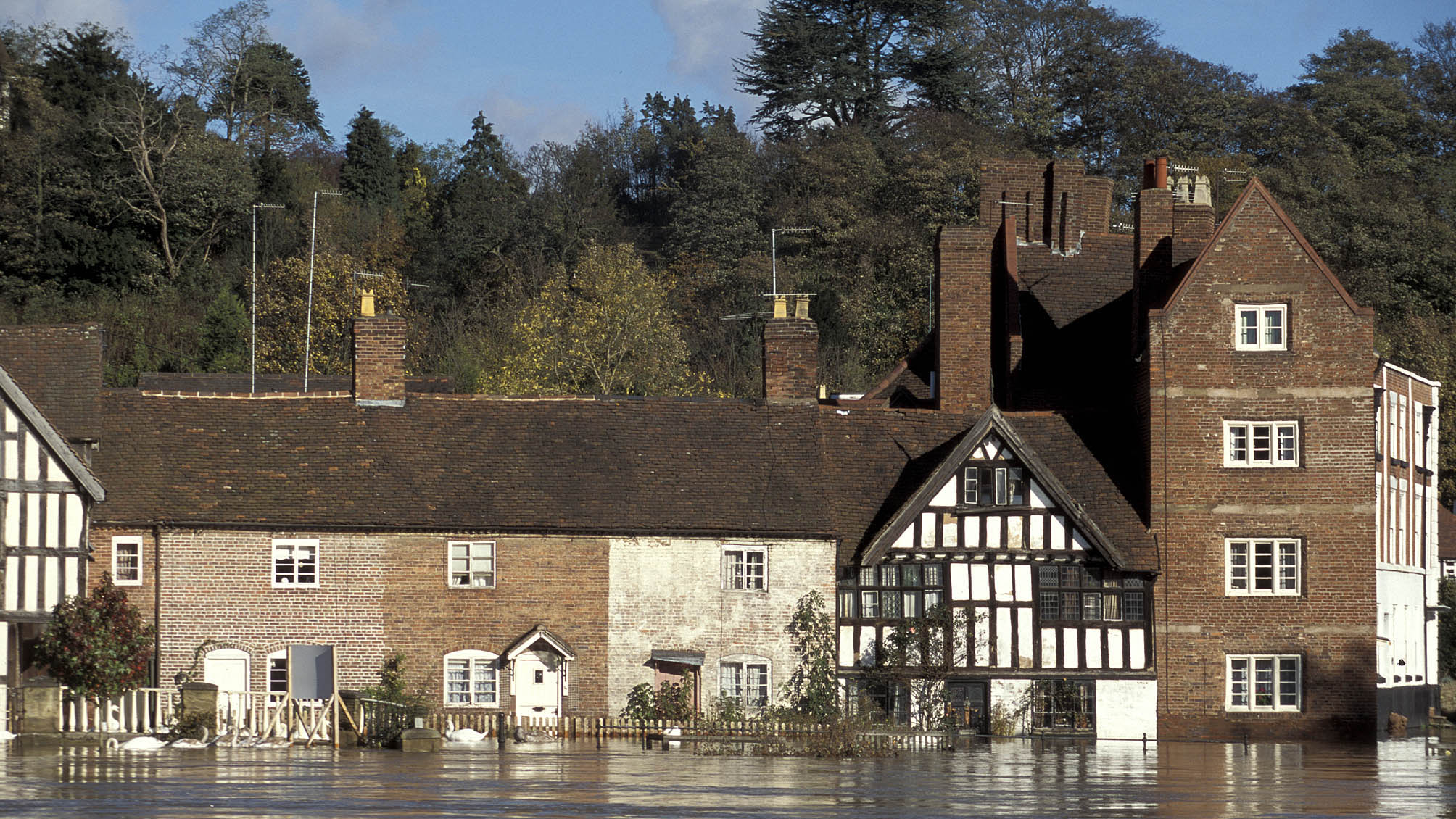Threats and Emergencies
Mitigating harm to heritage assets from catastrophic threats and emergencies:
This research topic is concerned with the development of practical approaches to manage risks and mitigate harm to heritage assets from catastrophic threats and emergencies, such as fires, flooding, storms and building collapse.
Flood resilience and recovery
Remedial works after flooding can range from highly invasive approaches (usually insurance backed) that entail extensive removal of affected building fabric, to more ‘minimalist’ approaches. These approaches have widely differing heritage, social and economic implications. The question this project sets out to answer is: How well do ‘minimal’ approaches to remediation perform compared to conventional methods that are more invasive and disruptive.
The project comprises four complementary lines of investigation: i) literature review; ii) case studies including site investigations and monitoring; iii) laboratory assessment of factors affecting the rates of drying of building elements after flooding; iv) assessment of contamination risks and evaluation of cleaning methods to eliminate bio-hazards.
Larger scale laboratory-based experiments are being carried out at Sheffield Hallam University to investigate the rates of wetting and drying of brick walls subjected to flooding. The project will also look at the effects of various wall finish, including plasters and renders, and assess optimum environmental conditions for drying. An interim research report is due for publication later this year
Four research reports are available so far:
Visit our web page on:
Fires in thatched roofed buildings
Since the 1990s, the number of thatch roofed buildings destroyed by fire has risen significantly. In the past decade, as many as 450 thatch-roofed buildings in England have been damaged or even destroyed by fire. Evidence strongly suggests that this is related to the increasing popularity of wood burning stoves. Recent studies have shown that these types of stove are more likely to cause fires in thatch roofs than other forms of heating, including traditional open fires. However, the actual method of thatch ignition has been the subject of controversy. Early research suggested that fires might be caused by heat transferred by conduction through the chimney stack to the thatch. However in the late 2000s, forensic investigators noted that many fires could not be explained by the ‘heat transfer’ method. It was clear that more research was needed to understand the threats that wood burning and multi-fuel stoves pose to thatch roofs and how risks might be reduced.
To assist in this, two full-size test rigs were built at the Fire Protection Association’s laboratory in Moreton-in-Marsh. These have been used to obtain data on flue gas temperatures and velocities during stove operation, and explore potential methods of fire-raising and heat transfer. Factors affecting the temperature and speed of flue gases, and the emission of sparks were investigated, along with the performance of different types of flue liner. The effects of damaged flue liners and partial blockages due to soot accumulation and birds’ nests were also explored. In addition, tests were carried out to assess the outcomes of different methods of lighting, refuelling and operation.
Participants: The Fire Protection Association. The research is jointly funded by Historic England’s Building Conservation and Research Team with National Farmers’ Union Mutual Insurance Society Ltd.
Programme and progress: The two-year programme of research is now complete. The research findings prove that heat transfer by conduction through the chimney stack is not the primary method of fire-raising. Instead, confirmed causes of fire are the ejection of high energy sparks and embers from the chimney top, and hot gases leaking through open joints or other defects in the chimney stack. As a result of these findings new guidance on reducing the risk of fire is available.
The research report also considers the effectiveness of spark arrestors and suggests the features that an ‘ideal’ stove system should incorporate.
Visit our page on Fire advice.
View our 2020 webinar on Buildings at risk: Fire in thatched buildings
For the best experience, please use Google Chrome browser or download Adobe Connect.
Pests and diseases
There are many pests and diseases which affect trees and shrubs. In many cases these form part of a natural ecosystem and do not cause unsustainable damage to the tree or shrub and forming part of a wider food web. But problems can arise when new pests or diseases are introduced because plants no defence against these organisms and they have no natural predators so they can very quickly reach proportions which are harmful, even fatal, and can rapidly spread.
In order to understand how new pests and diseases could affect historic designed landscapes Historic England has commissioned a pilot research project looking at which tree species are the most important components of historic designed landscapes. The report on Mapping Pests and Diseases in Historic Parks and Gardens was published in January 2019. Further research is planned.
Visit our technical advice page on Pests and Diseases.





